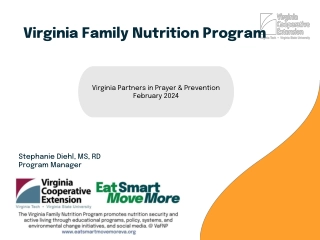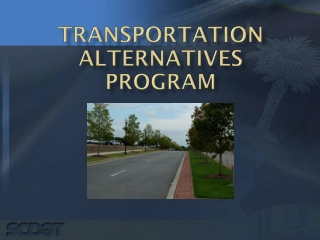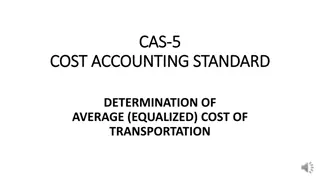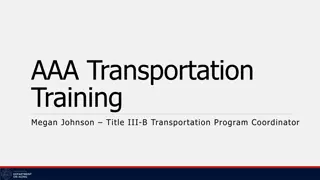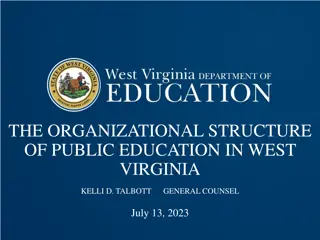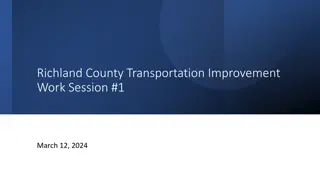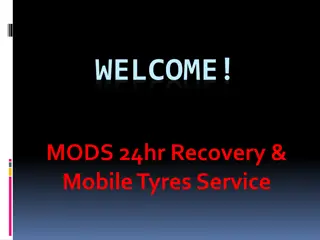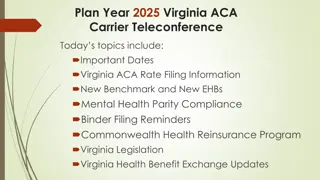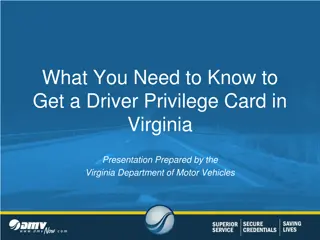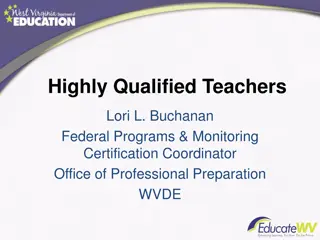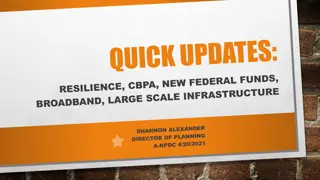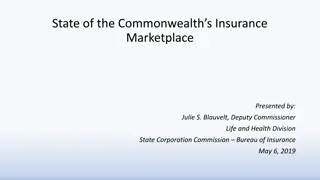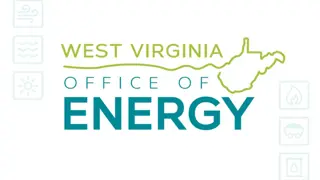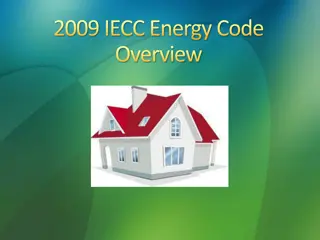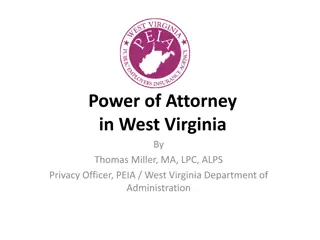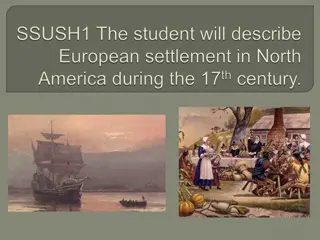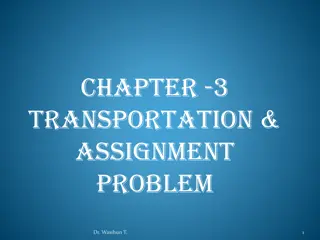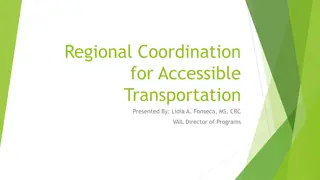Historical Transportation Developments in West Virginia
Explore the evolution of transportation in West Virginia during the 19th century, including the construction of canals, turnpikes, and roads that facilitated westward expansion. Discover key projects like the Chesapeake and Ohio Canal and the James River and Kanawha Turnpike that played vital roles in connecting regions and driving economic growth.
Download Presentation

Please find below an Image/Link to download the presentation.
The content on the website is provided AS IS for your information and personal use only. It may not be sold, licensed, or shared on other websites without obtaining consent from the author.If you encounter any issues during the download, it is possible that the publisher has removed the file from their server.
You are allowed to download the files provided on this website for personal or commercial use, subject to the condition that they are used lawfully. All files are the property of their respective owners.
The content on the website is provided AS IS for your information and personal use only. It may not be sold, licensed, or shared on other websites without obtaining consent from the author.
E N D
Presentation Transcript
Improvements of transportation in West Virginia
Directions Use laminated West Virginia road maps and dry/wet erase markers to complete the activity. Read the description and label when it is asked to. Each map needs a title. At the top of the map write Improvements of transportation in West Virginia Make a large rectangle in the bottom right hand corner of the map (where the legend is) and label it Key .
Moving Westward In the 19thcentury as more and more settlers moved into what would become West Virginia, transportation was crucial to getting the people westward. In this activity, you will discover how roads, canals, and railroads brought people and products to the frontier of western Virginia.
Canals Canals, or man made waterways, were built to move products over water instead of on roads. After the American Revolution, George Washington proposed building many canals to connect the coastal areas to the Ohio River
C and O Canal One such canal was the Chesapeake and Ohio Canal or C and O Canal. Construction began in 1828 to connect Washington D.C. to Cumberland Maryland (another section was planned to connect to Pittsburgh, Pennsylvania) From Harpers Ferry use the ______________ symbol to trace along the Potomac River going westward to Cumberland Maryland. Add the ________ symbol to the KEY and label it C and O Canal
Turnpikes and Roads When roads were built on old Indian trails, it was expected for the property owners to maintain the roads. This was very costly. To provide the money for upkeep, tolls were charged to people who used these roads. Four major turnpikes were used to move people and goods westward towards the Ohio River. They were the James River and Kanawha Turnpike, Staunton Parkersburg Turnpike, Northwestern Turnpike, and the National Road.
James River and Kanawha Turnpike Because of heavy traffic and the Kanawha Valley salt industry, roads were improved to connect important areas. Today, portions of I-64 and US Route 60 follow this route. Starting in White Sulphur Springs, draw the _______________ symbol to connect Lewisburg, Gauley Bridge, Charleston to Guyandotte. Label the road James River and Kanawha Turnpike . Add the ________ symbol to the KEY and label it Turnpike and roads
Staunton- Parkersburg Turnpike In 1826, Claudius Crozet was chosen to determine the potential route from Staunton to Parkersburg in western Virginia. Crozet had formerly served in the French military forces under Napoleon and helped found the Virginia Military Institute Starting at Staunton, Virginia use the ____________ symbol to follow US Route 250 to Beverly, then connect to Weston and Parkersburg. Label this road Staunton-Parkersburg Turnpike
Northwestern Turnpike Also engineered by Claudius Crozet, the Virginia Board of Public works was hired to build a road that would rival other roads heading west. Today, large portions of US Route 50 follow this route. Starting at Winchester, Virginia, use the ____________ symbol to connect Romney, Bridgeport, Grafton, and Parkersburg.
National Road The National Road was the first major improved highway in the US built by the federal government. It was built to connect the Potomac River to the Ohio River and was used by thousands of settlers moving west. It was completed in 1818 to Wheeling. Today, portions of US Route 40 follow this route. Starting at Cumberland, Maryland, draw the ____________ symbol to Uniontown and Washington Pennsylvania to Wheeling. Label this symbol National Road .
Railroads Roads and canals both faced a major obstacle- the mountains. With the horizontal boilers, steam locomotives could provide enough power to cross the rough terrain. Many railroads would compete to become the first railroad to connect the eastern seaboard and the Ohio River
B and O Railroad Maryland built a railroad to connect Baltimore and Cumberland which took 14 years. Once the railroad reached Virginia, negotiations were completed to continue the railroad to Wheeling. The B and O was completed in 1852. Starting at Martinsburg, draw the ____________ symbol to Martinsburg, Keyser, Grafton, Fairmont, Cameron, and Wheeling. Label this railroad line B and O . Add the ________ symbol to the KEY and label it Railroad
Northwestern Virginia Railroad With the B and O almost complete, a branch line to connect Grafton to Parkersburg was chartered. This line would be important because it would connect to Cincinnati, Ohio and other points west. Starting in Grafton connect Clarksburg and Parkersburg using the ____________ symbol. Label this railroad line Northwestern Virginia Railroad .
C and O Railroad After the Civil War, Virginian railroads looked to New York financier Collis P. Huntington to help connect Richmond to the Ohio River. A rail line already existed to White Sulphur Springs but a stagecoach was required to reach more western locations. In 1869 construction began. From White Sulphur Springs draw the _____________ symbol to Thurmond, Charleston, to Huntington. Label this railroad line C and O Railroad . Huntington, the western Terminus, was named for Collis P. Huntington.


